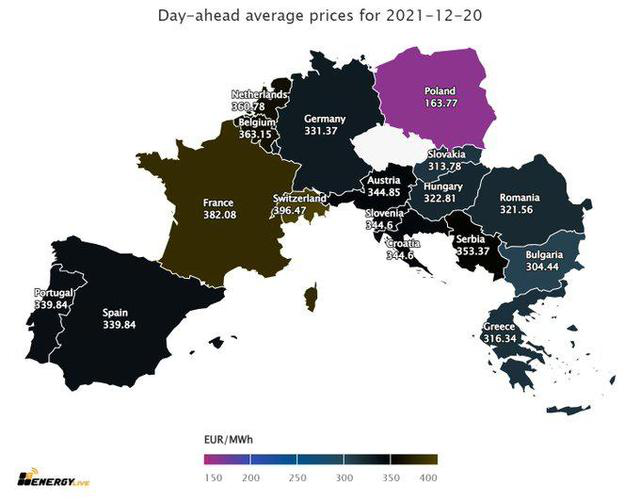European electricity price breaks through peak
This Christmas holiday this year, when Europeans receive all kinds of Christmas gifts, they are also destined to receive an unprecedented high-priced electricity bill...
In the Epex Spot auction held at noon on Sunday, local time, the day-ahead average price of almost all European regions, except Poland and some Nordic countries, has risen above 300 euros/MWh. Among them, the average electricity price in France and Switzerland has approached 400 euros.

Cold weather, weaker winds and nuclear power interruptions, coupled with very expensive natural gas prices, are causing Spain’s electricity prices to jump to a record level of 339.84 euros/MWh, while France’s electricity prices have risen to the level since the 2009 peak. The highest level is 382.08 Euro/MWh. In addition, the electricity price in Germany has risen to the third highest level on record at 331.37 euros/MWh.
1 MWh is equivalent to 1000 kWh of electricity. For those who do not know much about the history of European electricity prices, here is a comparison: at this time in December 2019, the day-a-day electricity prices in most parts of Europe were only in the range of 25-50 euros/MWh, which means Compared with the same period of the previous year, the current electricity price has risen at least six times or even more than ten times.
Along with the recent surge in electricity prices, there is obviously the price of natural gas in Europe. The European natural gas benchmark price, the Dutch TTF price, is currently more than seven times what it was a year ago. It rose above 140 euros per MWh last Monday, and has jumped by more than a quarter in the past week or so. The price of contracts that will expire after a long time into 2022 has risen along with the price of contracts that require immediate delivery of natural gas, which shows that traders expect shortages to continue for several months.
At the same time, the price of carbon emission permits has also risen sharply, which has increased the burden on the industrial sector; public utilities and other high-energy-consuming enterprises must purchase carbon emission permits to cover greenhouse gas emission quotas.



